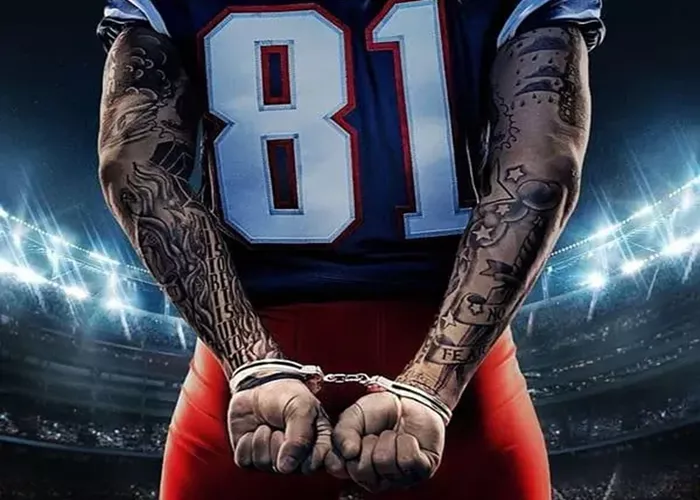An executive producer of American Sports Story has delved into the tragic conclusion of Aaron Hernandez’s story in the show’s finale, exploring the implications of his CTE diagnosis and how it shaped his life and crimes. The FX series, designed to uncover true tales of sports figures, centered its debut season on the former NFL star Hernandez, who was convicted of murder before taking his own life in prison. It examined his journey from a promising athlete to a convicted felon, shedding light on the darker facets of football culture and the physical and psychological burdens the game can impose on players.
In a recent interview , executive producer Stu Zicherman detailed how he crafted the ending to capture both Hernandez’s sorrow and the persistent perils associated with football. He aimed to evoke empathy for Hernandez without excusing his crimes, while also highlighting the broader unresolved issues in American sports. Here are his remarks:
“I didn’t want to end it in prison with Aaron. It felt too sad. We wanted to find a way to show this idea that the game continues to go on and that people like Aaron — and there are other players in the history of the game — are just forgotten.
What happens is forgotten… I want people to take the tragedy of it all away. He wasn’t born a killer. Without forgiving him for what he’s done, it’s a tragedy.”
“The brain injury stuff played out in such an interesting way in real life. It really became a debate, whereas our entire show there wasn’t much debate about whether Aaron had killed these men or what he’d done or who he was.”
The exploration of Hernandez’s CTE diagnosis also uncovers the alarming reality of brain damage in football, an issue that remains hotly debated today. Initially, Zicherman and his team planned to use actors to voice the final montage. However, they opted for real voices from well-known sports commentators, believing it would have a greater impact.
“The reason we decided to bring in real voices is because, in the sports world, those are really famous voices. Those are the pundits. Those are the chorus of people who are constantly commenting. This remains today an enormous debate inside of football: What are the dangers of playing? We thought it added more resonance if we used the real people.”
Zicherman also noted that his 12-year-old son plays football and dreams of going pro. “It’s become America’s pastime,” he said. “And the game has never been bigger.” Despite being aware of the risks, he believes football is ingrained in American culture and will continue to thrive.
“It doesn’t matter. We are addicted to this game. We’re going to keep watching it no matter what. So we just wanted to put a stamp on that.”
What does this mean for American Sports Story? It takes a humane approach to tragedy. The finale doesn’t just recount Hernandez’s sad story. By spotlighting the neurological and psychological toll football can exact on players, the show sends a powerful message about the dangers within the sport’s beloved culture. Hernandez’s CTE diagnosis highlights an issue that the NFL and other sports leagues still grapple with—the long-term effects of repeated head trauma. The use of real voices from sports commentators in the final montage emphasizes the scope of the issue, showing that the conversation is far from over and continues to evolve in the public sphere.
By concluding in this manner, American Sports Story ensures that Hernandez’s story lingers in the audience’s mind, serving as a reminder of the hidden costs of America’s favorite sport. Hernandez’s tale isn’t just a single tragedy but a broader statement about the risks athletes face and the unanswered questions about player safety that leagues must address. For viewers, his life story—from a celebrated NFL player to a convicted criminal with brain trauma—is a tragic illustration of what can happen when mental and physical health issues are overlooked or misunderstood.
Our take on the American Sports Story finale is that it portrays the other side of football. The ending holds up a mirror to America’s complex and often contradictory relationship with football. Despite growing awareness of CTE and the sport’s potential dangers, football remains deeply rooted in American culture, and many fans won’t abandon the game. The show effectively depicted the duality of football as a cherished sport that inspires people, yet it carries real dangers that both fans and players must recognize.
By not shying away from the difficult truths, Zicherman and his team crafted a show that sparks genuine conversations about sports, safety, and accountability. Hernandez’s story, though painful, is a necessary reminder in the ongoing discussion about the price athletes must pay to achieve greatness. American Sports Story functions as both a tribute to Hernandez’s humanity and a cautionary tale for sports organizations to address players’ health before more athletes succumb to similar tragic fates.
Related content:

